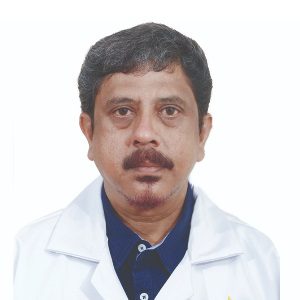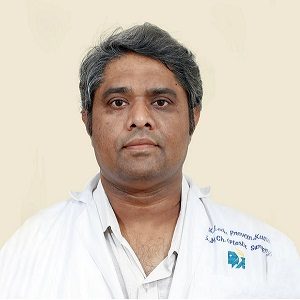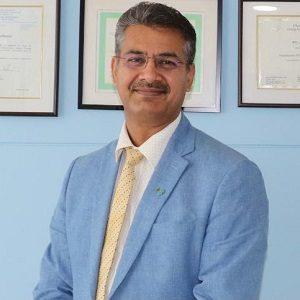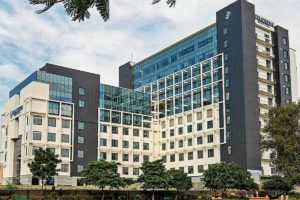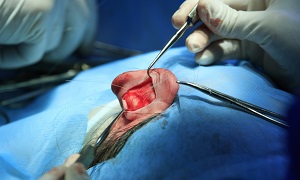Best Doctors in India for Otoplasty
- Plastic Surgeon and Cosmetic Surgeon, Chennai, India
- Over 14 years’ experience
Profile Highlights:
- Dr. Kannan Prema is a bright young cosmetic surgeon in Chennai, working on aesthetics.
- With over 14 years of experience as a board-certified cosmetic surgeon, Dr. Kannan Prema is the ideal choice.
- She provides surgical treatments like breast reduction, Rhinoplasty, removal of skin tags, buttock liposuction, etc.
- Plastic Surgeon and Cosmetic Surgeon, Chennai, India
- Over 16 years’ experience
Profile Highlights:
- Dr. Kumaresan M N is one of the finest Cosmetic Surgeons in Chennai with nearly 16 years of experience in the field.
- He ensures the best aesthetics for his patients.
- The Tamil Nadu Medical Council has had him as a member since 1992.
- Plastic Surgeon and Cosmetic Surgeon, Chennai, India
- Over 22 years’ experience
Profile Highlights:
- Dr. Leela Praveen Kumar is one of the top Plastic Surgeons in Chennai with more than 22 years of dedicated experience.
- The doctor is frequently visited by the patients for Breast implants, Vaser Liposuction, rhinoplasty, facelift, Breast Reduction, Bariatric Surgery, Microsurgery, Body contouring, Hand surgery, and Onco Reconstruction.
- Dr. Leela Praveen Kumar also manages a non-Surgical fat reduction procedure, known as Cryolipolysis.
- Plastic Surgeon and Cosmetic Surgeon, Chennai, India
- Over 40 years’ experience
Profile Highlights:
- Dr. Sundararajan M S is one of the best Plastic Surgeons in India, having practiced for more than 40 years.
- The doctor offers lipo filling, body contouring, non-Surgical facelift, tummy tuck, implants, etc.
- Dr. Sundarajan bagged the Best paper award in 2008 & 2013 and the other Gold Medal for his contribution to the field.
- Plastic Surgeon, Cosmetic Surgeon, Gurugram, India
- Over 25 years’ experience
Profile Highlights:
- Dr. Aditya Aggarwal has been an eminent figure in the Department of Plastic, Aesthetic, and Reconstructive Surgery.
- Throughout his career, he has invested in microsurgical procedures of physical amputation across the globe.
- He has worked in India, Berlin, Taiwan, and Japan, and his bright career echoes from each corner of the world.
Best Hospitals in India for Otoplasty
Narayana Superspeciality Hospital, Gurugram
- City: Gurugram, India
Hospital Highlights:
- Situated near DLF Cyber City, Gurugram, Narayana Superspecialty Hospital is one of the top medical facilities in the Delhi NCR region, catering to the needs of the people. Known for its commitment to quality medical care and patient service, the hospital is a state-of-the-art facility with planned and well-equipped sections, which includes a spacious OPD area as well as comfortable patient rooms.
- It is the closest super-specialty hospital from Indira Gandhi International Airport towards Gurugram, and also the nearest super specialty hospital from DLF Cyber City. It is also close to major residential areas in Gurugram.
- It is part of the renowned Narayana Health Group. Established in 2000, by Dr. Devi Shetty, a renowned cardiac surgeon, it has grown to be one fo India’s leading healthcare groups.
Sir Ganga Ram Hospital, New Delhi
- City: New Delhi, India
Hospital Highlights:
- Sir Ganga Ram Hospital, New Delhi is known to provide the latest medical procedures with the latest technology in all of its units.
- The hospital has a team of reputed doctors, nurses, and healthcare professionals that ensure that patients receive quality care at affordable costs.
- Staffed with a team of highly qualified doctors, dedicated nurses, and paramedical and non-medical staff, the hospital aims to lead in healthcare delivery, medical education, training, and research.
- As per the vision of the founder, the hospital also provides free treatment to the economically weaker sections of society.
- Sir Ganga Ram Hospital also provides training to young doctors under the Diplomate in National Board(DNB) program. The DNB program at the hospital was started in 1984 and it is known for currently running the maximum number of DNB specialties in the country. It also has the distinction of having the first bone bank in India.
KIMS Hospital, Hyderabad
- City: Hyderabad, India
Hospital Highlights:
- KIMS Hospital (a brand name of Krishna Institute of Medical Sciences) is one of the largest and best multi-speciality hospitals in Hyderabad. The hospital provides various treatments to an enormous number of patients.
- The hospital has a capacity of more than 3000 beds. KIMS Hospitals offers different healthcare services in more than 25 specialities and super specialities.
- The hospital is equipped with modern medical equipment and technology. It has robotic equipment to provide minimal invasive techniques for patients.
- The hospital is aimed at providing world-class healthcare facilities and services at an affordable cost for patients.
- The various specialities and departments of the hospital include neurosciences, gastroenterology & hepatology, robotic science, reproductive sciences, dental science, oncological sciences, organ transplantation, heart and lung transplantation and mother and child care.
Fortis Hospital, Shalimar Bagh
- City: New Delhi, India
Hospital Highlights:
- Fortis Hospital in Shalimar Bagh is a multi-super specialty hospital that strives to provide world-class patient care by leaving no stone unturned.
- Fortis, Shalimar Bagh, with 262 beds and a 7.34-acre footprint, provides the best level of medical care through its team of doctors, nurses, technicians, and management professionals.
Reliance Hospital, Mumbai
- City: Mumbai, India
Hospital Highlights:
- Reliance Hospital is one of the best super-specialty care hospitals in Navi Mumbai.
- The main purpose of this hospital is to become a trustworthy place for the best health and hope for society. The hospital is well connected to the suburbs of Mumbai and Navi Mumbai.
- The hospital has various specialty departments, viz., Accident & Emergency, Anesthesiology, Dental Services, Dermatology, Diabetology, Dietetics Nutrition, Endocrinology, ENT, Gastroenterology, General Surgery, Gynaecology And Obstetrics, Hepato Pancreato Biliary Surgery, Infectious Disease, Internal Medicine, Interventional Radiology, Laboratory Medicine, Minimal Access Laparoscopic Surgery, Nephrology, Neurosciences, Opthalmology, Orthopaedics, Paediatrics, Pain Management Palliative Care, Physical Medicine Rehabilitation, Plastic And Reconstructive Surgery, Psychiatry, Pulmonary Medicine, Radiology, Rheumatology, Transplant, Urology Andrology, Vascular Surgery
Lilavati Hospital & Research Centre, Mumbai
- City: Mumbai, India
Hospital Highlights:
- Lilavati Hospital & Research Centre is India’s premier multi-speciality tertiary care hospital and has been recognised as a global medical excellence centre.
- Lilavati Hospital & Research Centre has built an unrivalled level of trust with its patients over the years, thanks to a solid foundation that comprises cutting-edge facilities, the best medical competence, research, education, and charity endeavours.
- The hospital is quite proud of the fact that it now serves patients from all kinds of backgrounds, not just from the United States but from all around the world.
- The hospital has a total of 323 beds, one of the largest Intensive Care Units (ICUs), 12 Operation Theatres with modern amenities, over 300 consultants, and almost 1,800 personnel.
Venkateshwar Hospital, Dwarka, New Delhi
- City: New Delhi, India
Hospital Highlights:
- State-of-the-art technology and devoted healthcare professionals have been brought together under one roof at Venkateshwar Hospital to provide genuine medical care. The hospital’s professionals work together as a team to deliver the best possible treatment to their patients, using the most sophisticated equipment and information technology.
- Venkateshwar Hospital’s mission is to attain global excellence in healthcare by employing evidence-based, ethical clinical practices and cutting-edge technology by a team of highly skilled experts.
Otoplasty
Otoplasty, also termed as cosmetic ear surgery is a procedure for changing the shape, position or size of one’s ears. Otoplasty is chosen if one is not pleased with how far their ears stick out. It helps to build up or repair the outer ear, for people who were born with ear-shape problems or a person who has sustained ear damage.
Otoplasty can be done at any age usually after the age of five after a child’s ears have reached their full size. In some cases, the surgery is even done as early as at the age of three.
Purpose
The outer ear has a minor function in hearing, and it also contributes to a person’s physical appearance. When a person feels that their ears are too prominent, it causes embarrassment as well as psychological distress. According to some research, this can lead to low self-esteem, as well as low self-confidence.
The procedure is typically done on both the ears for optimizing the symmetry. Otoplasty can be performed at any age after the ears have reached their full size, usually after the age of five. It is also notable that otoplasty does not change the location of the ears nor does it alter one’s ability to hear.
Preparation
At first, you will need to consult with a plastic surgeon about the procedure. During your first visit, it is likely that your plastic surgeon will:
- Review your medical history- Keep in mind that you need to be prepared to answer questions about your current as well as past medical conditions, especially any kind of ear infection. If you are taking any medications or you’ve taken any recently, you need to discuss this with him/her. You also need to discuss past surgeries if you’ve had any.
- Do a physical exam- For determining your treatment options, the doctor will examine your ears, which will include their placement, size, shape and symmetry. The doctor may also need to take pictures of your ears for your medical record.
- Discuss your expectations- You need to explain why you want the surgery and what you’re expecting in terms of appearance after the procedure. Also, make sure that you understand that there might be a few risks as well.
If the doctor sees you as a good candidate for otoplasty, he/she may recommend you for taking some steps to prepare for the surgery.
- Food and medications- You might need to avoid a few medications such as aspirin, anti-inflammatory drugs as well as herbal supplements, which can increase bleeding.
- Other precautions- You might need to stop smoking before the surgery, as smoking decreases blood flow in the skin, and this slows down the healing process.
Try to make sure that someone can drive you home after your surgery, as well as stay with you at home for the first night of your recovery.
The surgery is usually done at a hospital or sometimes at an outpatient surgical facility. The procedure is done with sedation and local anesthesia, which nulls a part of your body. However, in some cases, general anesthesia, which can render you unconscious, might also be given before the procedure.
Procedure
Otoplasty techniques can vary depending on what kind of correction is required. The special technique which your plastic surgeon will choose will determine the location of your incisions and the resulting scars.
Your doctor can make incisions on the backs of your ears, or within the inner creases of your ears. After the incisions are made, the doctor may remove excess cartilage and skin. He/she will fold the cartilage into the proper position and then secure it with internal stitches. Additional stitches will be used for closing the incisions.
This procedure usually takes around two hours.
After the procedure
After the otoplasty, your ears will be covered in bandages for protection as well as support. You might feel a little discomfort as well as itching. You can take pain medications as your doctor recommends. However, if your discomfort increases after you take the pain medication, talk to your doctor.
Avoid sleeping on your side in order to keep pressure off your ears. Try not to rub or place excessive force on the incisions. Also, consider wearing button-down shirts or shirts having loose-fitting collars.
Your bandages will be removed by your doctor a day after your otoplasty. Your eyes may be swollen or red. Wearing a loose headband to cover your ears at night for few weeks can help in keeping you from pulling your ears forward when you roll over in your bed.
Some stitches can dissolve on their own while others need to be removed in the doctor’s office a few weeks after the procedure. Ask your doctor regarding when it is okay to resume your daily activities like bathing.
After your bandages have been removed, you will notice the change in the appearance of the ear or ears. These changes are going to be permanent. However, if the results of the surgery are not satisfactory, you can check with your surgeon regarding the possibility of a revision surgery.
Risks & complications
Otoplasty is usually quite safe as well as successful, and it also has high satisfaction rates. According to researchers in Germany, people usually have a better quality of life after they undergo otoplasty for reducing the prominence of their ears.
However, like all other surgeries, this surgery also has few risks and might lead to certain complications in a few cases. This can include-
- Infection: Like any other surgeries, there is a small risk of infection. If the patient however receives prompt treatment with antibiotics, this can help in preventing further complications.
- Numbness: In a few cases, the ears can become totally numb for several weeks after the surgery.
- Bruising: A hematoma, or blood clot, may sometimes form under the skin of the ear. This can appear 1–3 days after your surgery.
- Unsatisfactory appearance: Sometimes, the results of cosmetic surgery do not match the person’s expectations. The ears may be asymmetrical in some cases, or too close to the head, or too far from it.
- Recurrence: In a few cases, the ears might start to stick out again, which can lead to the requirement for revision surgery.


